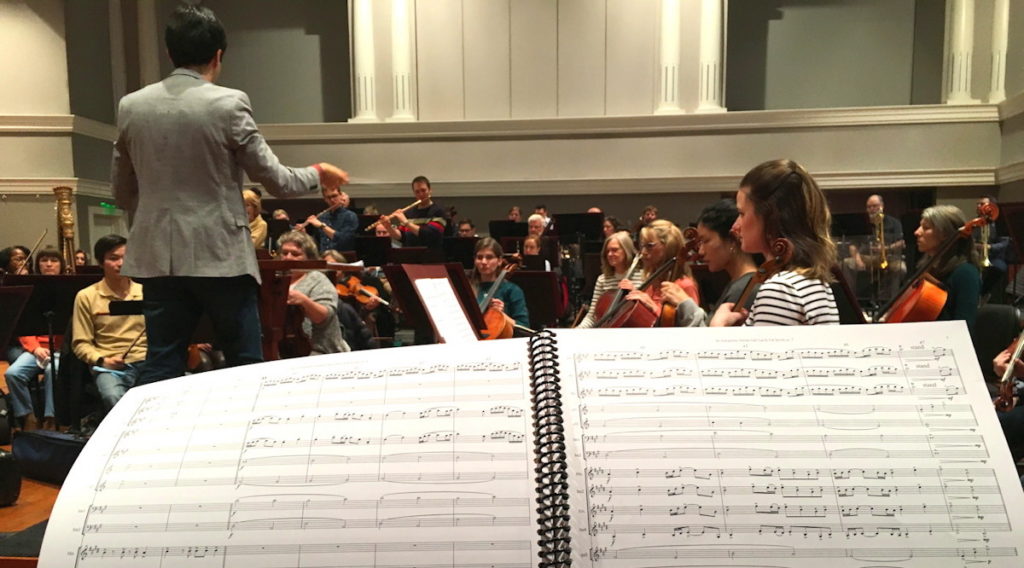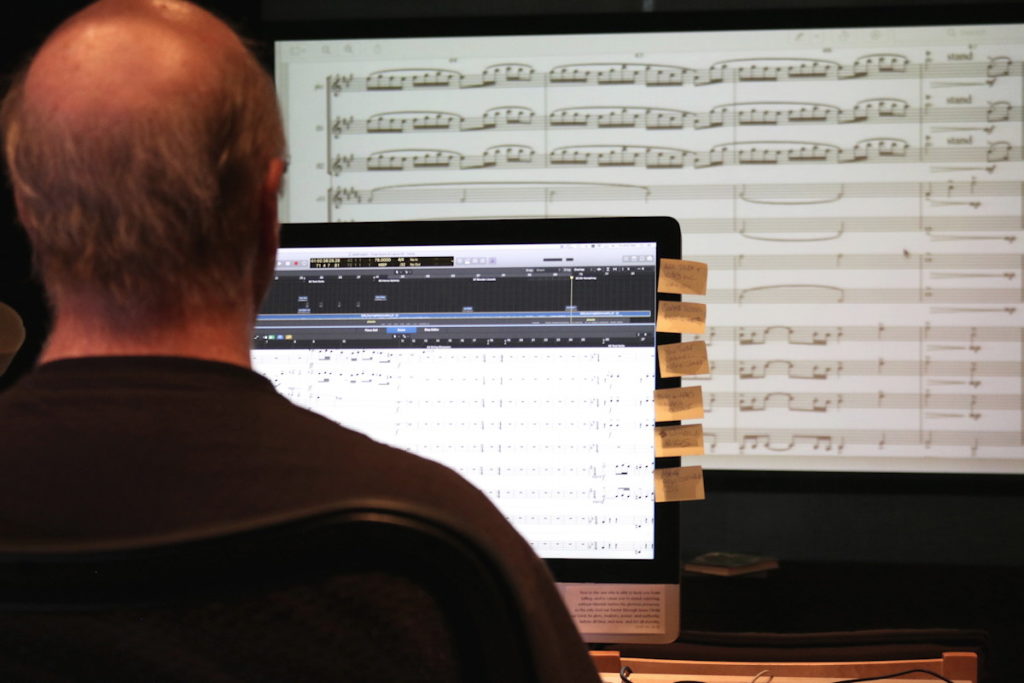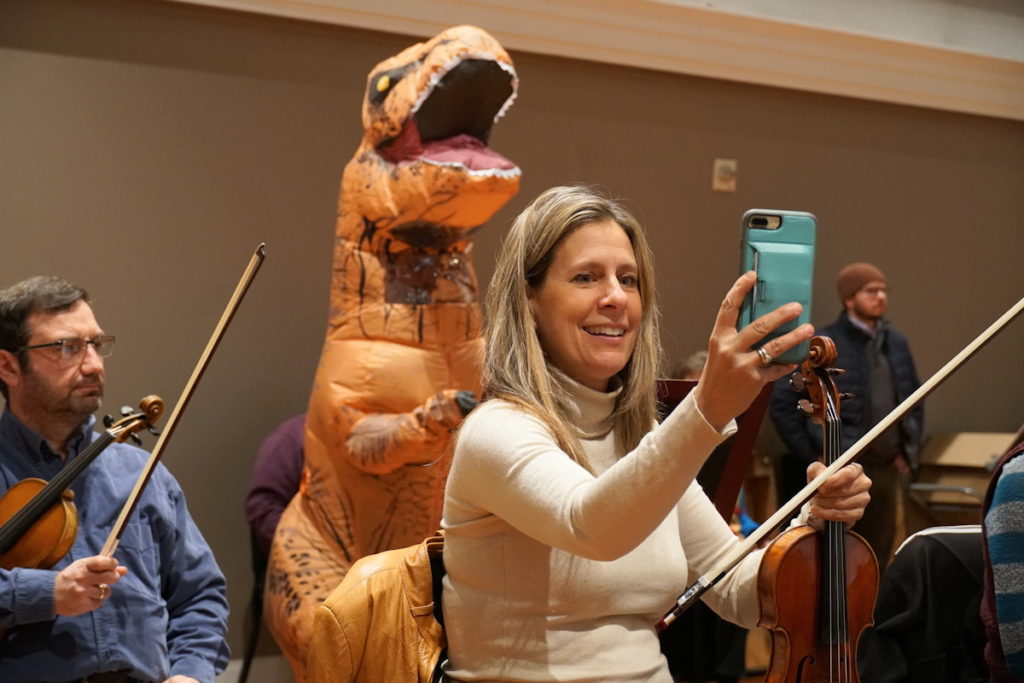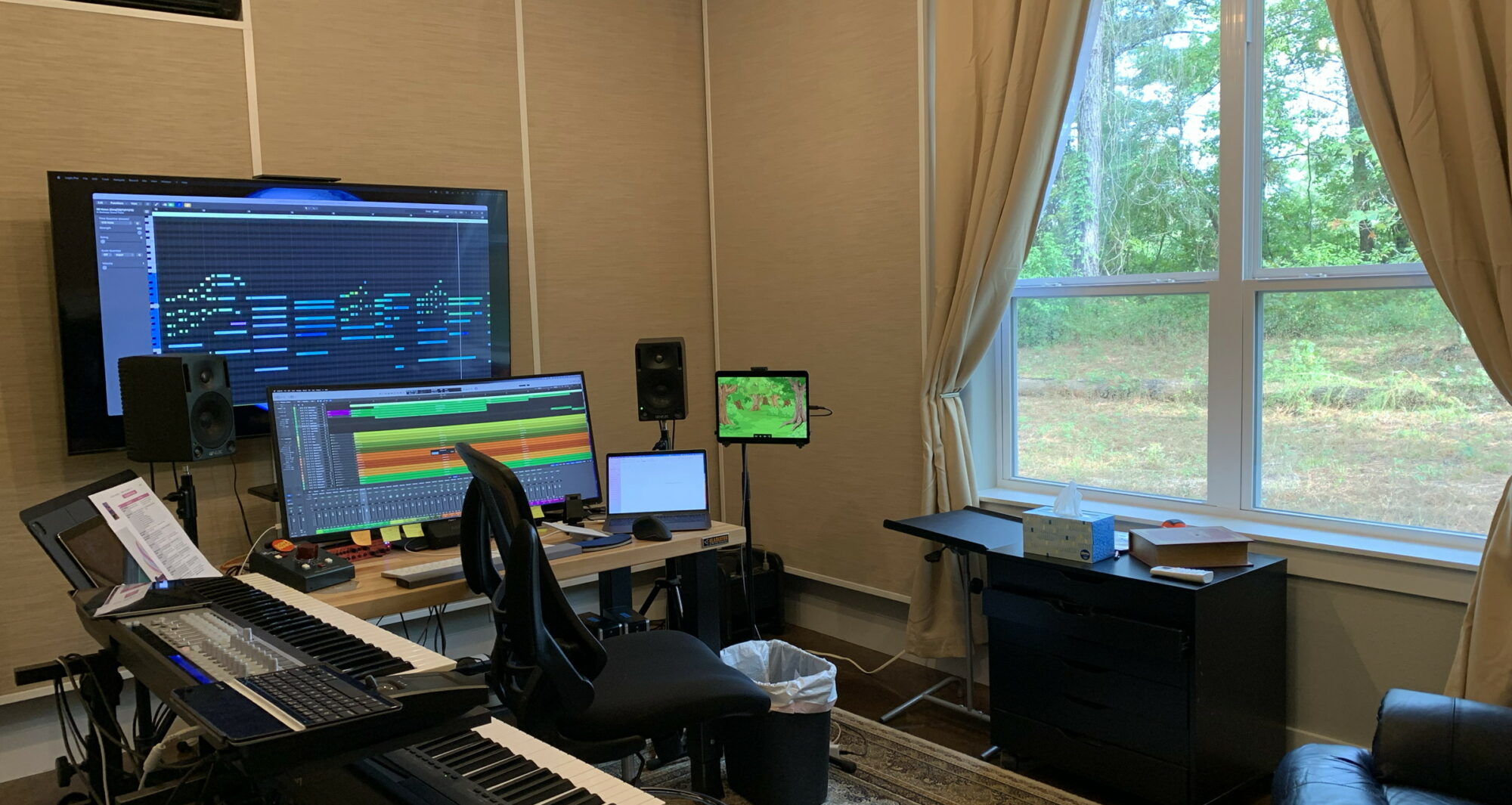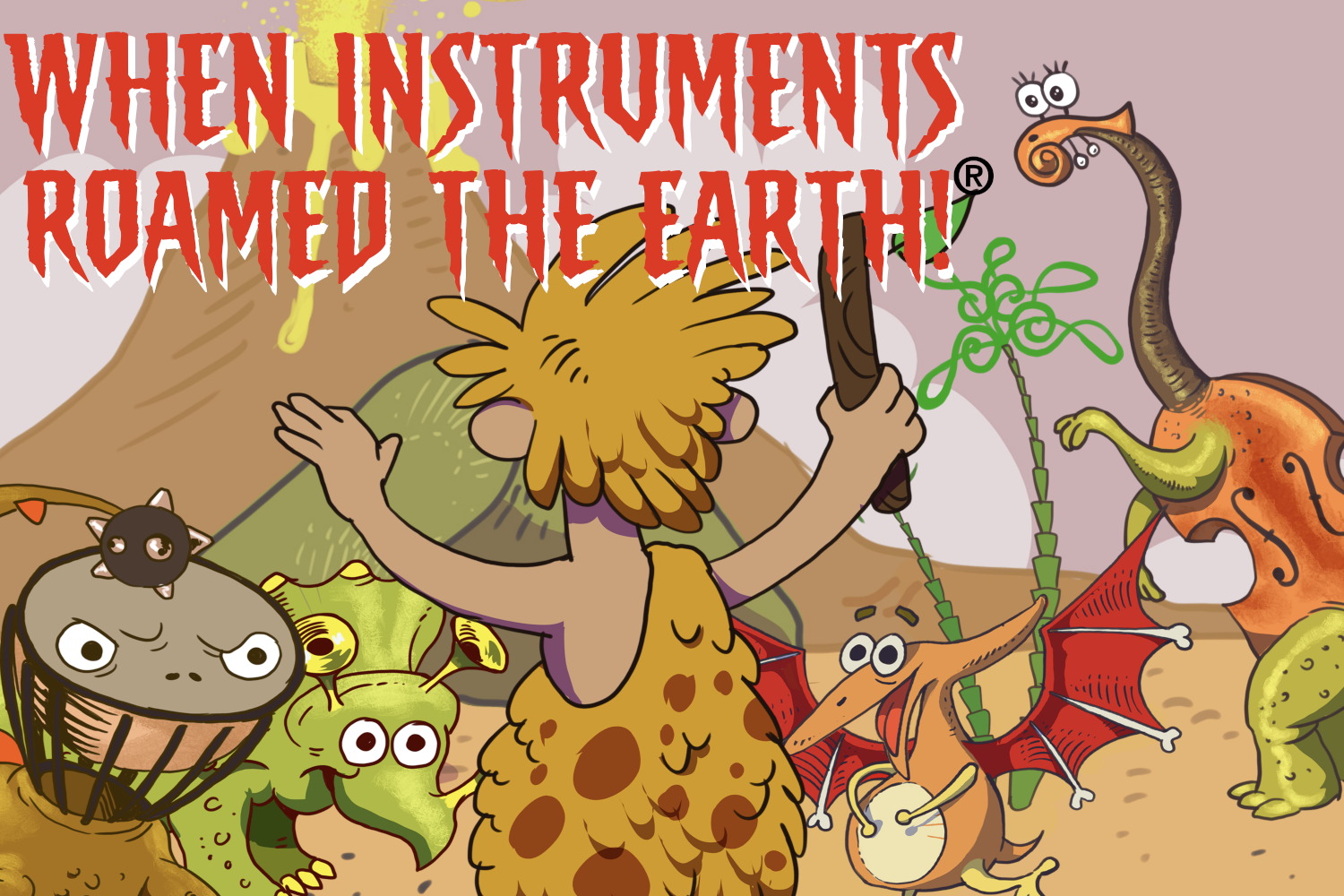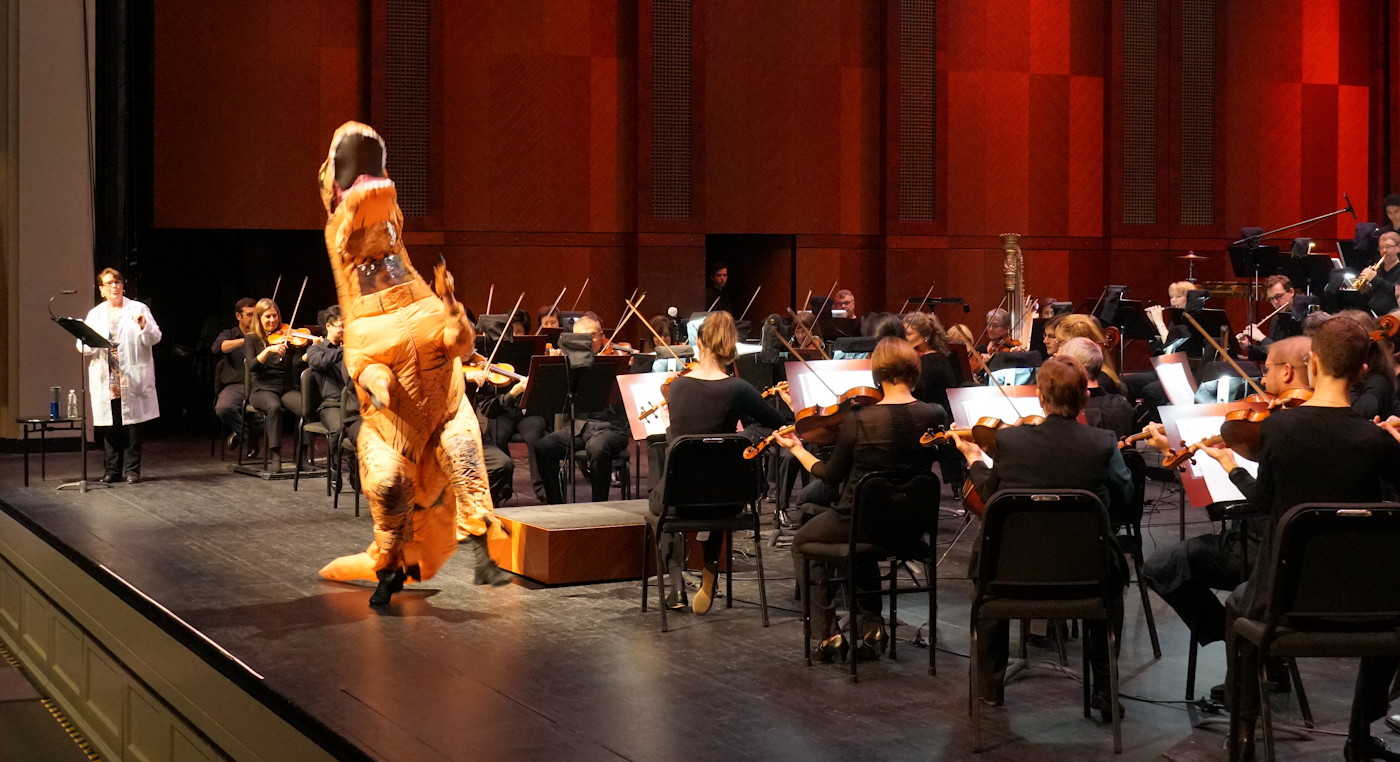Performed June 3, 2023 at the Meyerson Symphony Center, Dallas, Texas
“The Unicorn’s Birthday®” by Bob Singleton – Overview
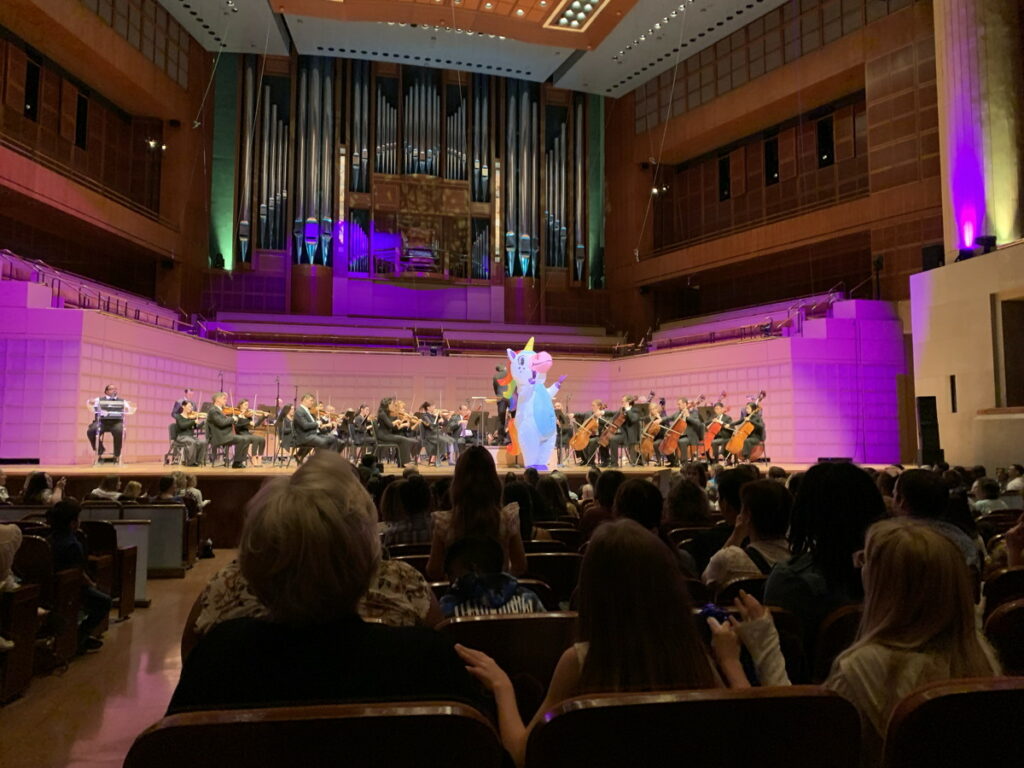
The Birthday Unicorn and the audience conduct the Dallas Symphony Orchestra in the rousing final movement of the concert.
“The Unicorn’s Birthday®” by Bob Singleton is a charming, fantasy-and-fun-filled symphony experience. Join the family-friendly birthday celebration brimming with music, narration, fun sounds, captivating on-stage activity, projection graphics, and gentle audience interactivity. This new work is an entertaining and welcoming concert for young families and/or special needs audiences. There’s even a visit from the costume-character Birthday Unicorn!
Hear, see, and imagine as the symphony orchestra presents a musical world of friendly penguins, monkeys, ducks, and other animals celebrating the Unicorn’s birthday. The concert finishes with a grand flourish as the audience conducts the symphony orchestra along with the costumed Unicorn. Everyone takes home free symphony-branded coloring pages filled with fun images from the concert.
Bring your favorite unicorn items, wear your best unicorn outfits, and get your picture with the Birthday Unicorn! The concert is perfect for patrons that are OK with moderate audience activity during the performance and wish to enjoy a memorable orchestra experience without frightening noises or musical tension.
The Unicorn’s Birthday was commissioned by the Dallas Symphony Orchestra, and co-commissioned by the Savannah Philharmonic Orchestra and the Oklahoma Modern Music Collective.
Bob Singleton, Composer – Bob is a classically-trained and Grammy®-nominated multi-platinum album award-winning composer & producer. He has also been nominated for 4 Dove awards in the Children’s Musical Album of the Year category. Bob is probably best known as music director for the hit kids PBS TV series and home videos, Barney®, and Friends for 10 years.
His works for symphony orchestra have been performed by the Dallas Symphony Orchestra, Nashville Symphony, Fort Worth Symphony Orchestra, Louisiana Philharmonic Orchestra, Alabama Symphony Orchestra, and many others.
“The music is catchy, clever, full of beautiful melodies, and peppered with entertaining sound effects like cats meowing, ducks quacking, and some simple spoken words or sound effects from the musicians. I was so pleased at the first rehearsal when the musicians were giggling and smiling throughout.
“I would highly suggest programming The Unicorn’s Birthday for a sensory-friendly and/or family concert! We will definitely be working with Bob again.” – Jennifer Guzmán, Director of Education, Dallas Symphony Orchestra
“I thought it was a wonderful program and definitely a keeper for future years. I was watching the audience and the interaction was fantastic, the length perfect, the melodies sweet and fun, and, of course, the orchestra “parts” hilarious. You cannot go wrong with Bob Singleton.” – Karen Schnackenberg, Principal Librarian, Dallas Symphony Orchestra
“It was such a pleasure to be part of this project!! I think this is a very special piece and I was proud to be part of the team that brought it to life. I hugely enjoyed working with Bob, and if there are opportunities to collaborate in the future, I would be eager to do so.” – Maurice Cohn, Conductor
“I wanted to let you know that I have been doing this for 20 years and I have never seen so much positivity about a children’s concert. The orchestra absolutely loved it! This was truly an amazing project and kudos to you for creating it!” – Bob Greer, Librarian, Dallas Symphony Orchestra
“First, you did a wonderful job of inviting a new audience into our world in a way that they could understand. Second, the music and the melodies were delightful! Third, The Unicorn’s Birthday is simply a first of its kind that I am aware of, a pioneering work for an audience as yet unreached.
“I am so proud to have been a part of the first performance!” – David Matthews – English Horn, Dallas Symphony Orchestra
“The Unicorn’s Birthday®” by Bob Singleton – Concert Information Summary
Performance Length: 45 Minutes
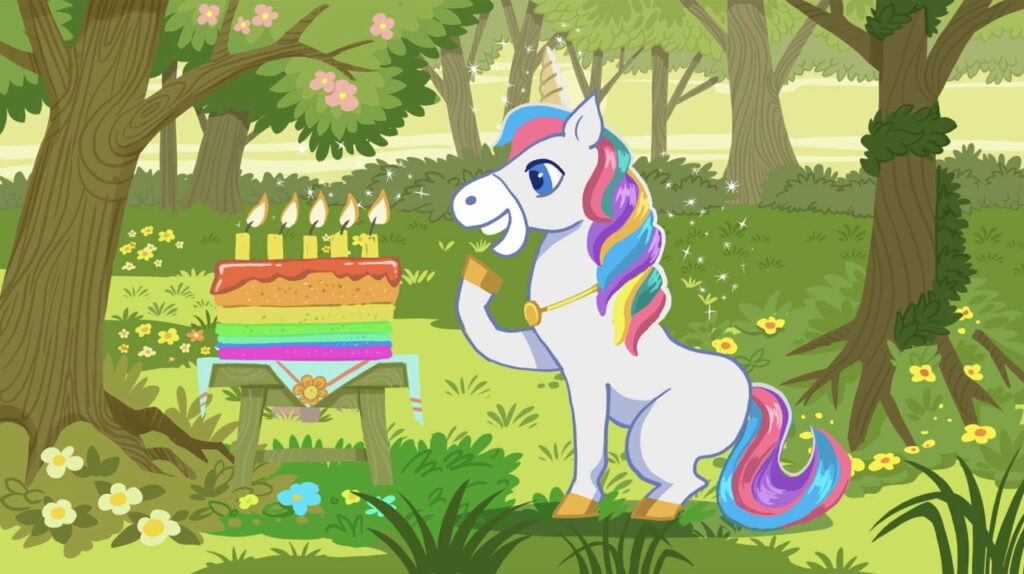
Presented by:
Medium-size double-winds orchestra (see instrumentation below)
Narrator
Inflatable costume character Unicorn (costume available on Amazon)
Special included features:
License allows unlimited performances for entire season
Tiered pricing
Streaming rights for one year
Adorable projection graphics (not required, but helpful)
Brand-able coloring pages for program or lobby activities
Promotional graphics and text
Can be presented as family and/or special needs/sensory-friendly
Delightful on-stage activity by musicians
Gentle audience interactivity
Music & narration never overlap
Three detailed scripts; Narrator, Technical, & Slide Advance
Instrumentation:
2 flutes
1 oboe
1 English Horn
1 Bb clarinet
1 Bb clarinet/bass clarinet
2 bassoons
3 French Horns (with mutes)
3 C trumpets (with straight mutes)
*optional Bb trumpet parts included*
3 trombones (with straight mutes)
3 perc.*
violins 1
violins 2
violas
cellos
contrabass
Note: no piano, harp, tuba, or timpani
*Percussion list:
snare drum (snares on & off)
Tuned percussion: glockenspiel & xylophone
Misc. percussion:
tambourine
wood blocks
finger cymbals
small crash cymbals
small suspended splash cymbal
triangle
ratchet
bell tree
duck call
engraving by Philip Rothman, NYC Music Services
Details, Details! about “When Instruments Roamed the Earth!®”
When Instruments Roamed the Earth!®
a family symphony orchestra concert
© 2021, Singleton Productions, Inc.
concert description
New for 2025! Second Edition scores & parts music engraved by NYC Music Services/Philip Rothman with updated scripts & educational download!
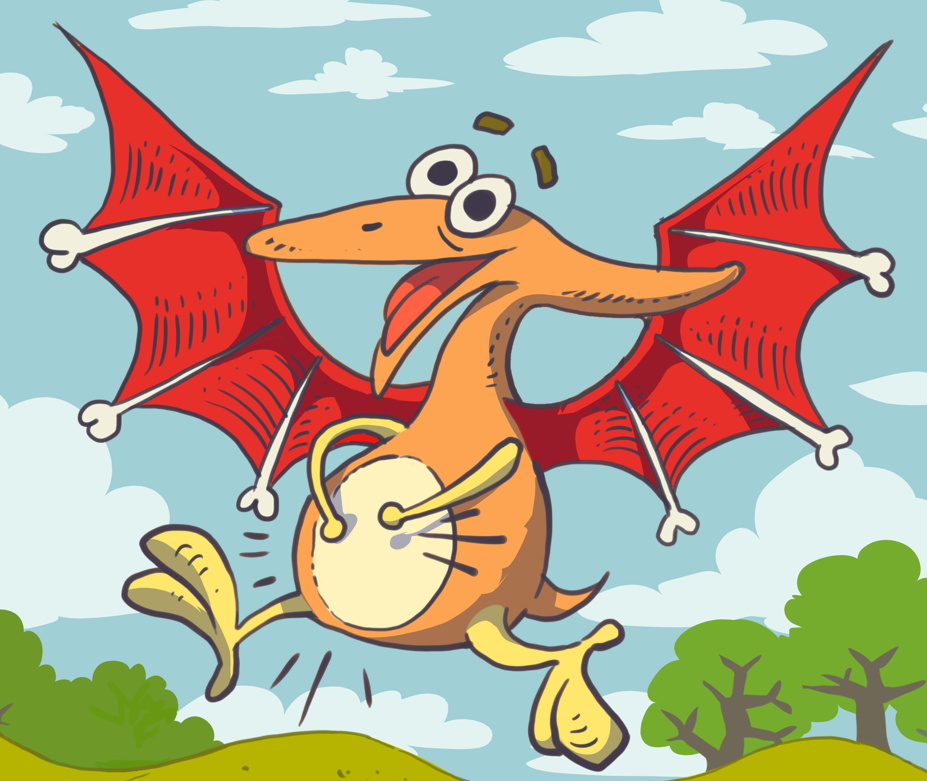
“When Instruments Roamed the Earth!®” is an all-original, multi-media, story with narration. and music event for symphony orchestras.
Just as Looney Tunes introduced a generation to loving classical music, “When Instruments Roamed the Earth!®” takes a new generation on a hilarious journey to love the people, the sound & the experience of the symphony orchestra.
“When Instruments Roamed the Earth!®” is sold as a “season pass,” allowing unlimited performances during a season.
The concert purchase package includes:
- .pdf conductor score, all parts books, narration and technical scripts
- all graphic files for projection during performance
- promotional graphics, video, and text copy for programs, print, and web media
- all rights to present music, story, & graphics in concert and promotions for 1 year
- printed scores and parts available, and are sold, not rented
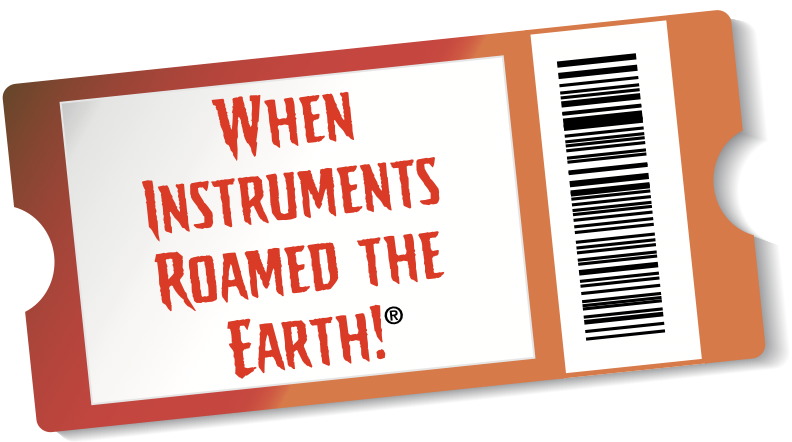
Specifications:
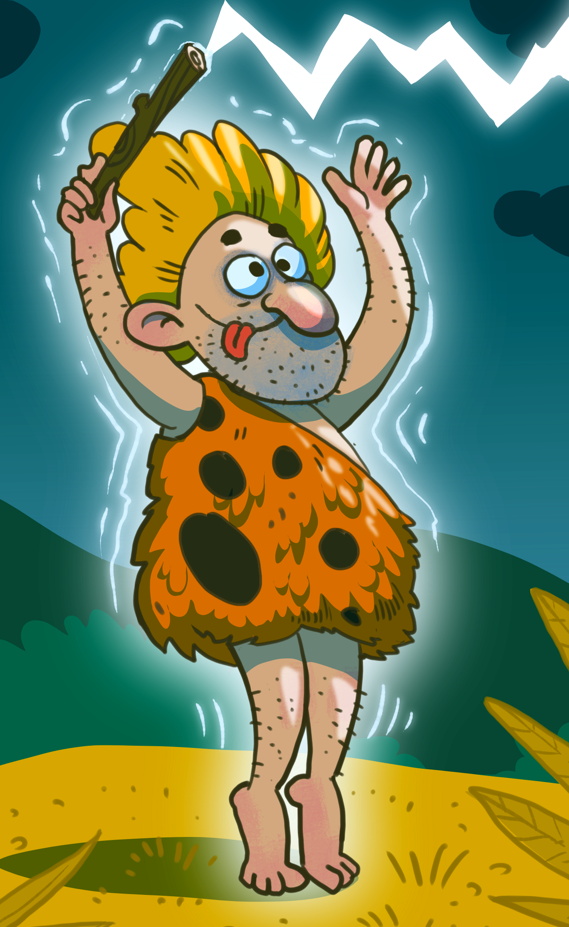
- perform in under 45 minutes
- “double winds” orchestra (plus piccolo-full orchestration listed below)
- all original score, graphics and story
- narration can be delivered by special guest or conductor
- fun & funny music and story for kids and grown-ups
- features orchestra soloists and sections throughout
- one easy rehearsal, many impressive performances
the concert
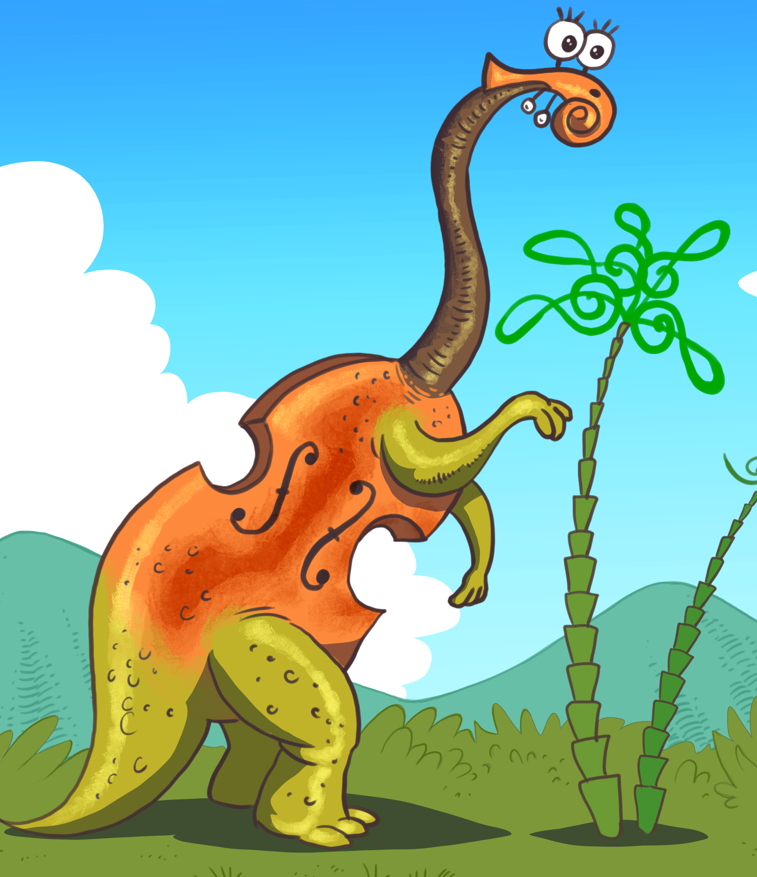
In pre-historic times, strange creatures walked the planet. These were the ancient ancestors of musical instruments that inspired melodious makers in brass and wood to create the instruments we see in the orchestra today.
Take a journey into, “When Instruments Roamed the Earth!®” Filled with laughs, surprises, multi-media projection and on-stage action, any symphony can easily present this perfect all-ages introduction to the exciting sounds, people, and experience of a symphony orchestra concert.
Hear and see the hilarious “research” of paleo-musicologist, Sir Humphrey Treble-Clef, who believes that our modern instruments are actually the descendants of giant, dinosaur-like creatures like you’ve never seen before. These are strange creatures which exist in the hot, mysterious, swampy jungles of Sir Humphrey’s unusual imagination.
Most will not believe a man who tried to prove that ancient humans made music by hitting themselves on the head with rocks; but everyone will smile, laugh, and be in awe of the symphonic interpretations of Sir Humphrey’s wild theories, featuring all the instruments of the symphony orchestra.
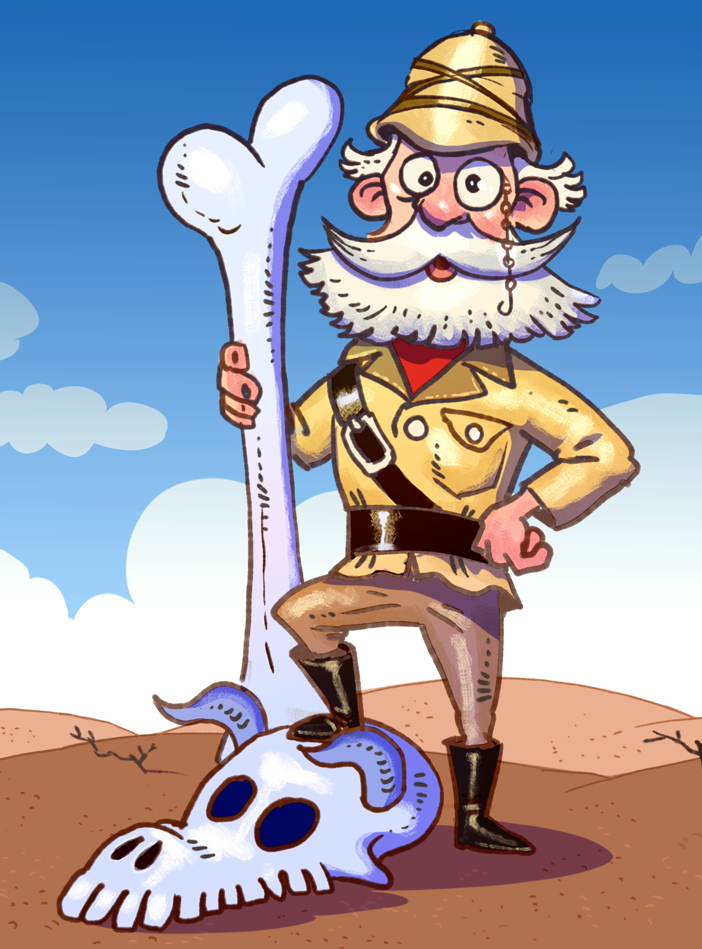
The concert event package includes:
- fun and funny musical sounds and sights
- liberal use of humor and energy
- a showcase of the people, instruments, and dynamics of the symphony orchestra
- a musical/narrative journey that builds to a grand finale, leaving audiences wanting more
- fun, eye-catching original art for projection, programs, print and social media
- fun, challenging, and performable music
- narration can be delivered by a hired performer, the conductor, or by a non-musical guest narrator
- social-media-friendly lobby interactions with characters, musicians, and sponsors
take away promotional & lobby activities
Symphony branded pdf coloring pages are included for lobby fun and take-home promotional items. Symphonies add their logo and/or sponsor logo on art that will live for months on bedroom walls and refrigerator doors.
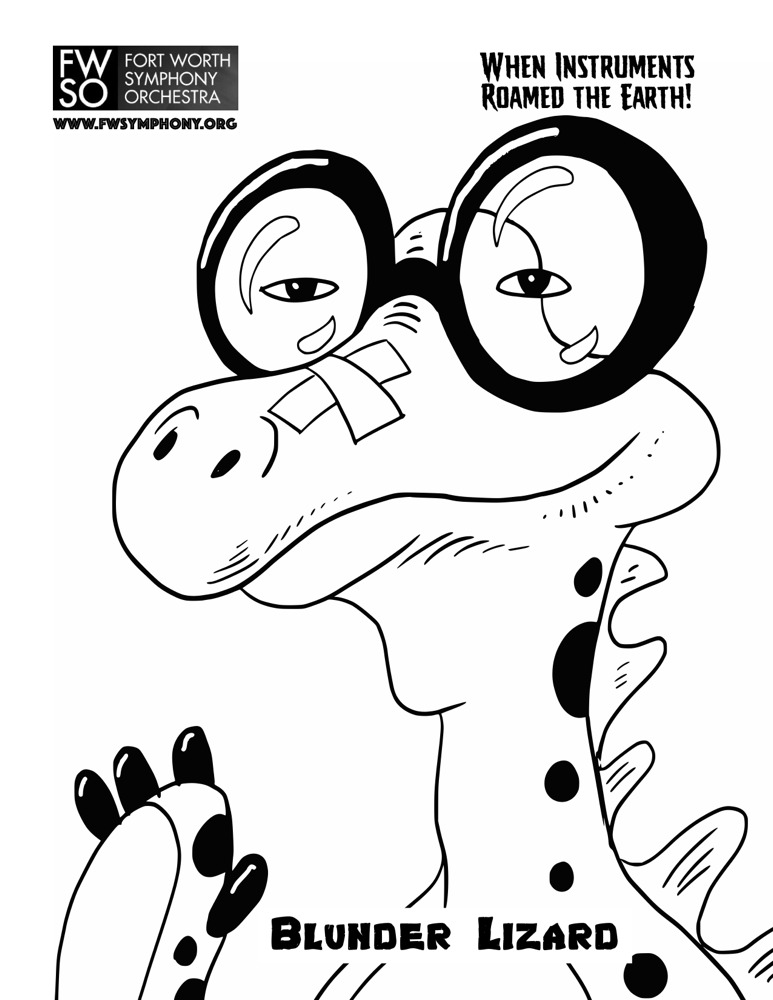
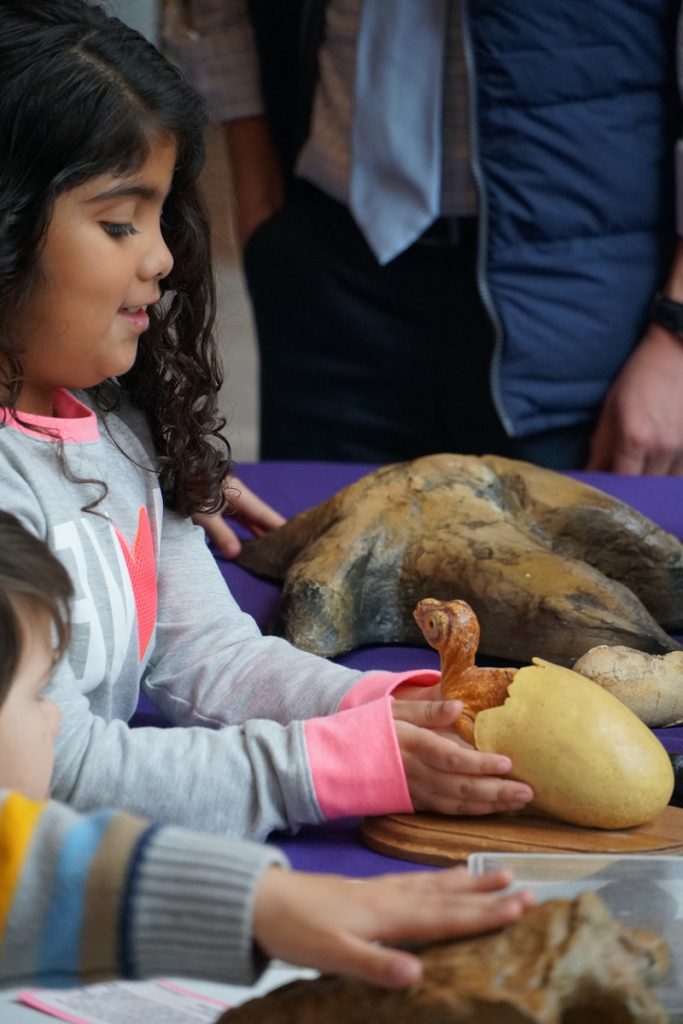
Create complementary lobby co-promotions with sponsors and natural history museums.
Lobby social photo opportunities spread the symphony name and fun by including onstage characters and symphony musicians.
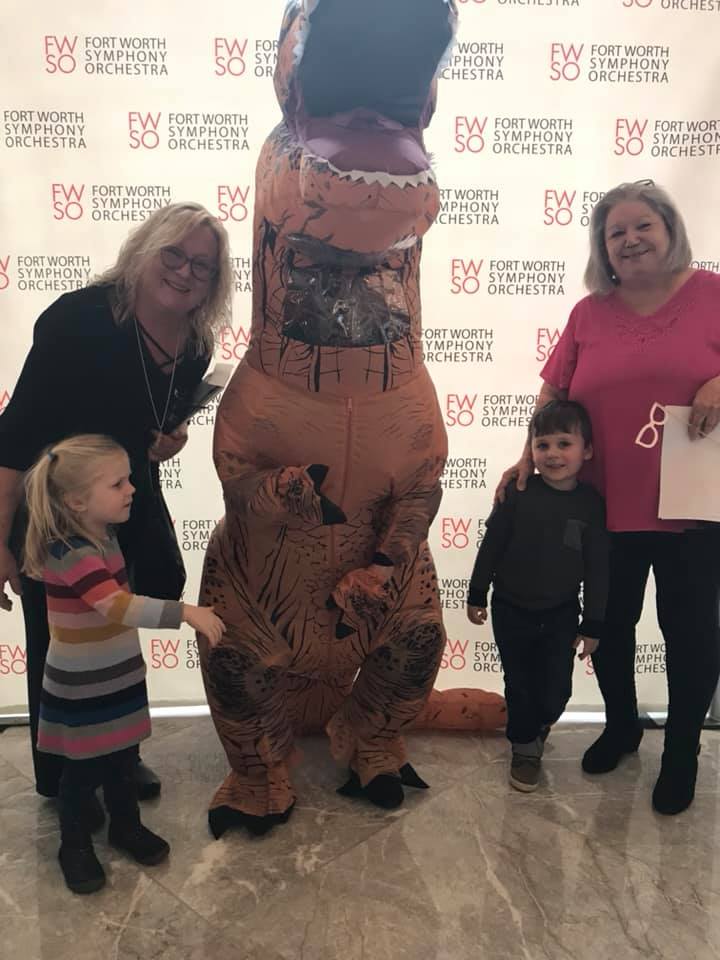
educational values
Families will be thrilled as they experience exciting, age-appropriate sights, sounds, and sensations with the orchestra, making them laugh and want more. Using captivating examples and without lecturing, audiences see, hear, and experience the four sections of the orchestra with eye-and-ear-catching examples by soloists and sections.
The performance uses visually kinetic “choreography” throughout as soloists and sections stand and interact, showcasing dynamics, contrasts, personalities, and the enchanting sounds of the orchestra.
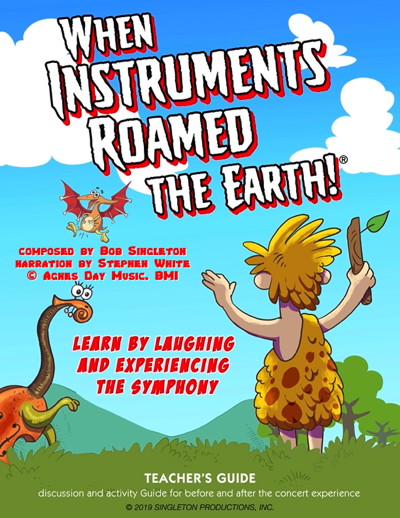
Includes free downloadable Teacher’s Guide with pre-concert and post-concert discussion ideas.
audience survey responses
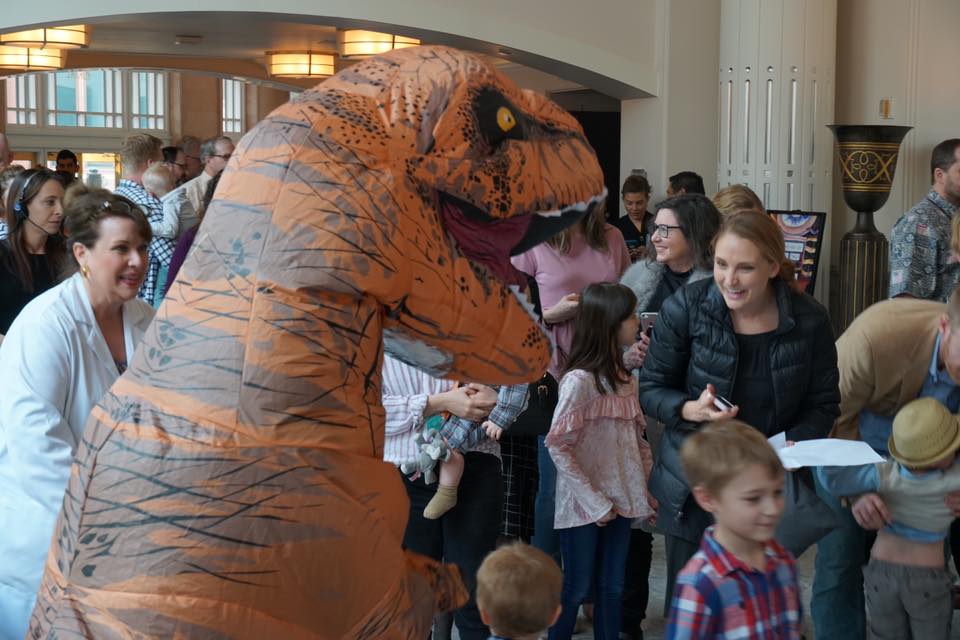
(survey of audience members at world premiere performance):
- “Best of the 3 [family] concerts we attended!”
- “Amazing! The children were so engaged and excited! FANtastic!!!”
- “If this is an example of what the family concert series is about, I’m sold.”
the creative team
“When Instruments Roamed the Earth!®” is created by the award-winning TV writing team of Bob Singleton, composer, and Stephen White, script & story.
Bob Singleton is a classically trained, Grammy®-nominated and multi-platinum album award-winning composer, producer, and arranger. His musical works for kids includes music for over 70 PBS episodes, more than 60 albums, an NBC network special, and a sold-out Radio City Music Hall run. Bob served as the music director for the world-wide children’s phenomenon, “Barney® & Friends” for 10 years, and has been awarded two multi-platinum albums, and nominated for a Grammy® and 4 Dove awards in the Children’s Musical Album of the Year category.
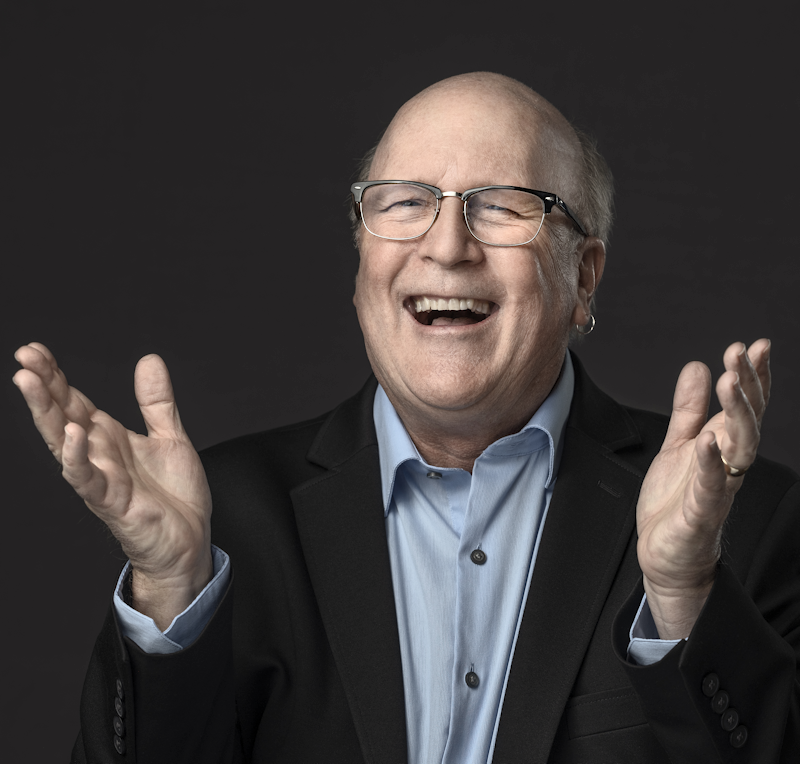
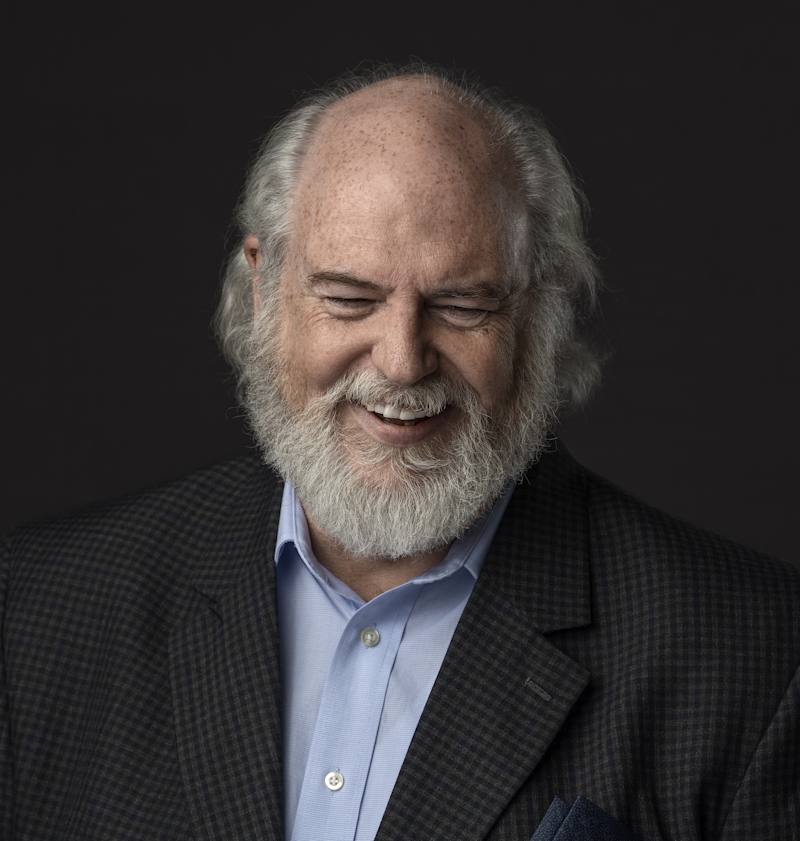
Stephen White is an Emmy and Grammy®-nominated writer, with years of experience writing for television, home videos, stage shows, million-selling children’s books, and film. His credits include Principle Writer for “Barney® & Friends” (16 years), writer for in-store musical extravaganzas for Chuck E. Cheese, lyricist for many award-winning songs and commercials, and children’s app developer/creator of “AlphaBELCH” and “Thumbpire,” which incorporate stories, images, and music for young children.
Max Larin is a busy artist and illustrator for books, magazines, and computer games around the world, while enjoying life in Kiev, Ukraine. He loves watercolor painting and creating imaginative worlds with computer tools.

orchestration
strings:
violins 1
violins 2
violas
violoncello
contrabass
woodwinds:
1 piccolo
2 flutes
2 oboes
2 Bb/A clarinets
2 bassoons
brass:
4 horns in F
3 trumpets
3 trombones
1 tuba
percussion:
1 timpani
3 utility
1 piano (can be digital)
1 harp
projection specifications
Projection content is 42 sequentially numbered 1280×960 pixel .png graphics files. These files must be placed into the projection program of your choice. There is a separate “Slide Advance Script” with cues and instructions. Slides only advance during narration, so operator does not need to read music.
audio specifications
2 voices need microphones: conductor & narrator (voices speak sequentially, never overlap)
Optimum mic/operator spec for voices:
- conductor – your choice of microphone
- narrator – wireless headset mic for narrator to allow gestures and possible entrances/exits
- audio operator to balance volume levels between conductor and narrator, plus mute inactive channels
Minimum mic/operator spec:
- one microphone shared by conductor & narrator, and handed off from conductor to narrator
- boom mic stand for narrator
- mic placement should allow narrator to gesture with hands, and have sightlines for script, orchestra, and graphics
- audio operator to adjust volume and mute mic when necessary
lighting specifications
Optimum lighting:
- full orchestra illumination during music cues
- fixed spot on narrator during narration
- one follow-spot with operator for T. Rex costume character
Suggested pre-programmed lighting looks:
- full orchestra lighting for all music cues
- narrator on side of stage with fixed spot and orchestra lights down, allowing visibility of projection on screen and drawing attention to narrator.
- for final music cue, manned follow spot on T. Rex plus full orchestra
Minimum Lighting:
- orchestra illumination with pre-lit narrator and conductor.
- allow enough down-stage spill to light the “guest conductor” in a T-Rex suit who will enter and position in front of conductor riser to do physical schtick during music Cue 10.
- anticipated area of T-Rex movements is up to 20 feet left and right of the conductor riser.
staging considerations
- One music stand for narrator script; placed on either stage left or right of orchestra, not at center. Short exit path off-stage or stepping out of sight for narrator is a plus during music cues. Narrator does not require a seat onstage.
- T-Rex suit is 7’ tall, and the tail is nearly 3 feet long. Person in T-Rex suit will have very limited visibility. They should have an area of sufficient size near the stage to put on and inflate the suit. It is recommended that there are no stairs or obstacles on path to stage.
- T-Rex should have a straight, unhindered path to front and center of stage from wings.
- A backstage and lobby event wrangler for the character should be provided.
- T-Rex character will need at least 6’ of space between orchestra and lip of stage, plus 20’ left and right of conductor riser to perform during final music cue.
post-concert meet & greet/social media stations in lobby
Pre-plan social photo stations with line wranglers and courtesy photo-takers for 2 characters. Any additional meet & greet such as conductor and musicians is a bonus.
When Instruments Roamed the Earth®! Composer’s Concert Notes & Music Cue Narrative Descriptions
music by Bob Singleton, narration by Stephen White
© 2019 Agnes Day Music, BMI. Used by Permission. All Rights Reserved.
NOTE: “stand/sit” instructions are NOT optional.
The Concert
The Objective
The objective of “When Instruments Roamed the Earth!®” is to present a kinetic, multi-media story-and-music concert event. Just as Looney Tunes introduced a generation to loving classical music, “When Instruments Roamed the Earth!®” takes a new generation on a hilarious journey to love the people, the sound & the experience of the symphony orchestra. It is a modern cartoon approach to inspiring the next generation of symphony lovers & musicians.
The Audience
The core audience for this concert is kids first, and their families second. The orchestra’s job is to create an extraordinary, kid-capturing multi-sensory experience with dynamic sights, sounds and sensations. The music is just part of the entire experience, and the music should be packed with dynamics and fun, and delivered with humor and activity. Once kids have their first “wow” symphony experience, they will be ready to explore the depth and range of the orchestra. They will be hooked.
They enjoy anything that is fun, and funny. They seek heroes. They connect with individuals. They are endlessly curious. They want to see and experience. They don’t want you to explain to them, they want to discover for themselves. And, they want to laugh. They really want to laugh, a lot.
The Presentation
Kids require a multi-sensory experience. They access information using all their senses, and experience life with all senses, simultaneously. Boldly present visuals, seat-shaking sensations, and the full dynamics and textures of the orchestra. It’s difficult to go too far for most kids with all the senses. Let them see and connect to you, the musicians, and their instruments. Give them lots of “in-the-seat” opportunities to interact, with applause, cheers, rhythm, and laughter.
This concert should be free of rules, and full of stimulus. It will be kinetic and dynamic; visually, aurally, and experientially. It won’t be a dramatic arch of theme, development, and long periods of repose. It will be a series of heroic moments with people, images, sounds and humor.
It’s imperative to engage kids in fun and laughter. Laughter is a visceral, whole-body bonding experience for kids. Ignore belly-laughs and fun with kids this age at your peril.
Igor Stravinsky is credited with saying, “I haven’t understood a bar of music in my life, but I have felt it.” Kids are the same. Let kids feel the experience. Don’t explain it to them.
The Payoff
Enjoy. Embrace the way kids enjoy the experience. Have fun. It shows, and kids can read it. Wow them with this concert, and then take them on a rich, music-filled life-journey with the people and music of the orchestra.
Bob Singleton, composer
Dallas, Texas, USA
2019
Composer’s Concert Notes & Music Cue Narrative Descriptions
Q01 “When Instruments Roamed the Earth! Theme”
This cue is an exercise in comic musical pomposity.
Measures 1-11 are reminiscent of 1950’s era science-fiction movie themes for famous black and white movie Japanese monsters. The exuberant, over-the-top tension and noisy dynamics are designed to grab the attention of kids and entertain adults.
Measures 12-20 is a grand fanfare heralding the comic self-importance of the concert, foreshadowing the pomposity and ignorance of the main character, Sir Humphrey Treble-Clef.
Measures 21 to the end is the march theme. Think of it as a theme to “Raiders of the Lost Ark,” if that movie was a slap-stick comedy. This is a continuation of the silly self-importance of the main character, echoing the background music used in cartoons and black and white newsreel footage of famous explorers and national heroes.
Q02 “Sir Humphrey Treble-Clef”
Sir Humphrey is a silly character, who probably achieved his title of “sir” by accident or misunderstanding. When he was a child, his curiosity led him to look at ants through a magnifying glass, whereupon he accidentally set them on fire by focusing the sun on them. He has probably mixed up “right” and “left” all his life and never noticed.
As an adult, his most academic pursuits have been comic books and alien conspiracy theories. The music reflects this character that is oddly out-of-step with the rest of the world, with an off-kilter world view that is funny to everybody besides himself. If it was brought to his attention, he wouldn’t get the joke.
The comic interplay of the flutes, piccolo, and bassoon in mm. 12, 21, and 55-56 reflect his comic character, as does the general musical foolishness and whimsy throughout this cue. There are 1/2 step melodic collisions in the main theme to emphasize Sir Humphrey’s looney personality.
Q03 “Kaboom for Orchestra”
“Kaboom for Orchestra” is a musical depiction of a cartoon archeological site. While nobody in their right mind would use dynamite while unearthing artifacts, Sir Humphrey Treble-Clef has never actually been in his right mind.
The cue starts with a match sonically being struck by the cymbal scrape in m. 1, the fuse being lit and burning with the strings and woodwinds trill in mm. 2-6, the explosion on the downbeat of m. 8, and debris falling depicted by the xylophone in m. 8 b. 3-4.
The general “busy-ness” and hubbub of the archeological site starts at measure 9. The 8th note activity theme in m. 9 is punctuated by more explosions (mm. 19-24, 33-34, 47) a hammer and chisel (m. 37-38, 48-49, 52-53), and using a scrub brush (m. 56-62).
Measure 55 to the end is the lazy end to a long day, with an “Oh, no!” ending. A match is lit by Sir Humphrey at m. 55 with the cymbal scrape, but it seems to go out. At m. 62, we find the fuse is actually lit (violins trill-trombone flutter tongue); while at m. 63, Sir Humphrey gets close to the dynamite, lights a match and tries to light the burning fuse again. A pregnant fermata-silence ensues.
In classic Roadrunner-vs. Wile E. Coyote fashion, after the pregnant pause, the dynamite explodes in m. 64, b. 3. It should be a shock to the audience.
Q04 “String Dinosaurs”
The string sections should be prepared to stand and hold up their instruments or gesture toward their instruments, when cued by the narrator during the talk before this cue.
This cue is a showcase for the strings. It purposely features techniques that are unique to the strings. Standing to show off the techniques allows kids to make a visual and aural connection to things they’ve heard, but may not know how they are created.
This cue starts with a moody, morning-in-the-mist feel, with a lush, amorphous pad-like sound from the woodwinds, strings, and harp. The violin solo depicts a small, lithe dinosaur waking, and stretching in the early morning light and mist.
Measure 19 transitions to the busy life during the day, with the forceful theme by the cellos, double bass, and piano. The aggressive theme is played by the 1st violins. The 2nd violins enter and antiphonally play the theme, demonstrating that there is more than one thing going on in that part of the orchestra, where everybody looks like they are doing the same thing.
The cue demonstrates pizzicato, sul tasto, col legno, marcato, solo and tutti playing. Everything should be played to its maximum effect; the beautiful pads should be lush and the solo should be expressive; the aggressive sections should be marked and punctuated. Players should put their body into their instruments and their parts so that kids will see that playing is not just an intellectual exercise, it’s a mind-soul-body experience.
The cue ends as it began, when the small dinosaur settles down at the end of the day, and with a final punctuation, drops into sleep.
Q05 “Toot Suite for Woodwinds”
The woodwinds should be prepared to stand and hold up their instruments when cued by the narrator during the talk before this cue.
This is a musical section about passing wind. Farting. A booty blast. A panty burp… tastefully presented by the symphony orchestra. If Mozart could refer to it shamelessly, it can be presented to bring laughter to everyone.
This cue presents the image of a chewing dinosaur with the sound of a ratchet and the passing of wind by the third trombone. The humor is enhanced by the dynamic contrast of the light and lyrical passages played by the woodwinds, and the wet, blatty, forte blasts by the third trombone. Extend the “fart” moments for comic effect, if you wish.
By m. 97, our dinosaur hero is feasting on the wind-inducing fauna with wild abandon, as the orchestra plays a sort of loud, drunken waltz. There’s one more big windy release at m. 111, and at mm. 116-117, a comic pause for effect, and then a non-tonal squeak of a singing release by the trumpet buzzing into a mouth-piece.
This will probably be the most memorable and talked-about piece of the whole concert. Embrace the fun.
Q06 “Horns Aplenty”
Brass should be prepared to stand and hold up their instruments when cued by the narrator during the talk before this cue.
This cue is a brass feature. It depicts what starts as a small gathering of “horned” dinosaurs and develops into a “traffic jam” of pushing and blaring by the end.
It showcases horn choir and horn rips, trumpet mutes, trombone slides, and each section with idiomatic themes.
Q07 “Blunder Lizards”
Percussionists should be prepared to strike their instruments when cued by the narrator during the talk before this cue.
This cue is a percussion feature. The percussion should be loud, and their gestures should be bigger than life.
This cue could be subtitled, “Fanfare for a Clumsy Dinosaur.” The narrator’s description is of large, slow, plodding, near-sighted, stumbling behemoths.
The big brassy fanfare and percussion is countered by light, flighty woodwinds, which could be imagined to be smaller, tinier dinos, butterflies, flying raptors, and flying debris that is stirred up by the large reptilian land masses.
Give this your best Olympic-style comic attention.
Q08 “Finale, Part 1”
This is a recap of several previous cues. It should be played with wild abandon.
At the end, the snare continues rolling under narration into the short next cue.
Q09 (only 4 measures) “Cymbalsaurus”
Tension builds as the narrator, over the rolling snare, describes that there is a meteor, hurtling toward Earth. It’s comically revealed that it wasn’t a huge meteor, just a little tiny one that crashed on the head of the Cymbalsaurus.
Q10 “Finale Finish”
There will be an inflatable T-Rex costume character on stage. The audience will go wild. This cue should be played with wild abandon for comic effect while the T-Rex “conducts” the orchestra. Everything is accented and forte, sounding like at every turn, it might finally end. It doesn’t.
There are 3 big, false endings where it sounds like it really might end: mm. 11-12, 25-26, and 43-45.
Shout the text mm. 39 to the end like you’re a cheerleader. Don’t be shy.
***end***
“The Unicorn’s Birthday®” Symphony Concert
a Sensory-Friendly Concert Celebration, commissioned by the Dallas Symphony Orchestra
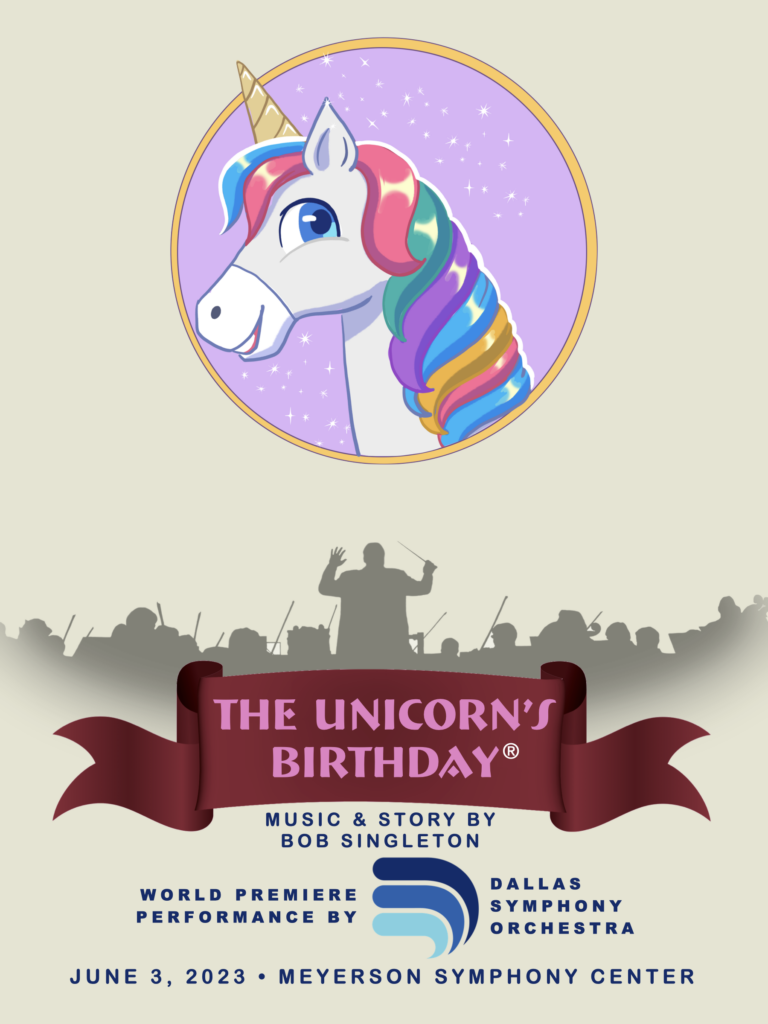
The Dallas Symphony Orchestra commissioned Grammy®-nominated and multi-platinum award-winning composer, Bob Singleton, to create a brand new sensory-friendly concert. This concert was co-commissioned by Savannah Philharmonic and Oklahoma Modern Music Collective.
“The Unicorn’s Birthday®” is a charming, fantasy-and-fun-filled symphony experience with terrific music, fun sounds, captivating on-stage activity, friendly graphics, and gentle audience interactivity.
This new work is a musically satisfying and welcoming concert for young families and special needs audiences. It is perfect for patrons that are OK with moderate audience activity during the performance and wish to enjoy a memorable orchestra experience without loud, sudden noises or musical tension.
The world premiere performance by the Dallas Symphony Orchestra was on June 3, 2023, at the Meyerson Symphony Center in Dallas, Texas. Several other symphonies are planning performances, including Nashville Symphony and the Savannah Philharmonic.
Build strong community goodwill while growing audiences with this heart-warming symphony experience.
Contact me for more information about performances.
Announcing “When Instruments Roamed the Earth!®” vs. 2.0
“When Instruments Roamed the Earth!®” was premiered by the Fort Worth Symphony Orchestra in Bass Performance Hall under conductor Alejandro Gómez Guillén in February 2019.
What do you do after you’ve had a triumphant world premiere of a new type of family concert, by a world-class symphony orchestra, in a revered symphony hall?
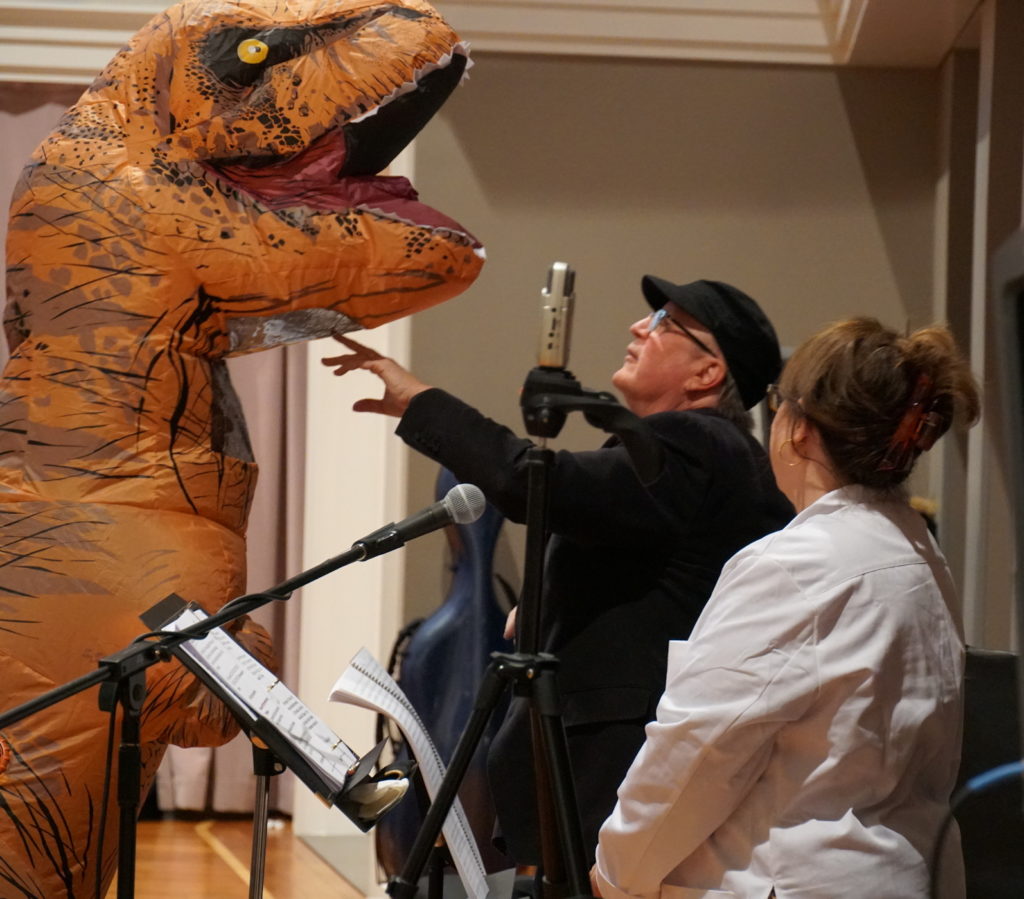
You make it better.
During all the read-throughs, rehearsals and the performance of, “When Instruments Roamed the Earth!®” copious notes were taken, musicians were queried, conductors were questioned, and audience members, production staff and characters were surveyed; all to find out, “how can we make this better?”
We found out. Then, we went to work on version 2.0.
“When Instruments Roamed the Earth!®” version 2.0 includes:
- a big laugh that was added earlier in the narration to get the fun started sooner and larger
- revamped orchestration, reworked in key areas
- all scores and parts were totally re-engraved using a unified “house style,” with fresh paginations, layouts, instructions, and markings for quicker rehearsals and better performances
- the title change was rolled out to all scripts, scores, parts, graphics, and promotional elements (“When Instruments Roamed the Earth!®” was originally titled “Jurassic Parts.” Questions about that? Funny story. Ask us.)
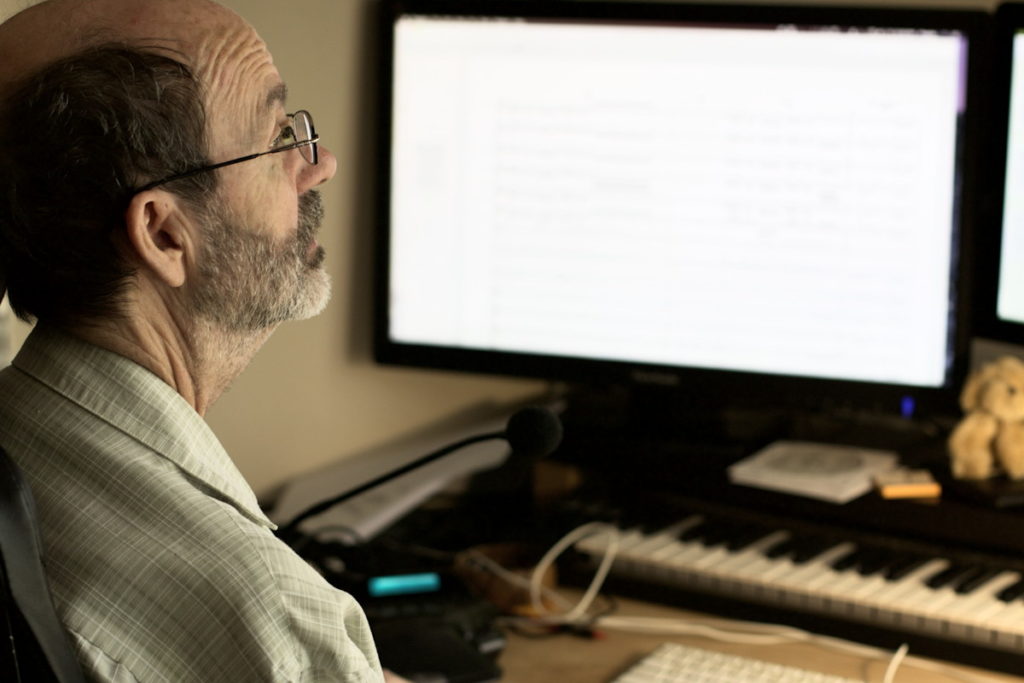
Contact Bob Singleton now for more information: bobs@singletonproductions.com
